Abstract
This paper compares anti-leukaemic efficiency with toxicity to the patient of chemotherapy during and immediately after central nervous system irradiation. The drug regimen consisted of daily mercaptopurine (MP) and weekly methotrexate (MTX) at the maximum tolerated dose. Of 140 patients with acute lymphoblastic leukaemia allocated to receive this drug regimen during and after cranial irradiation, 8 died in complete remission within 6 months of the end of irradiation. Details of the nature of these deaths are given. This result led the Working Party to modify the chemotherapy scheduled for this stage in treatment. The modified chemotherapy consisted of MP at reduced dosage before and during cranial irradiation and omission of MP and MTX for 3 weeks after irradiation, during which time daily prednisolone with 2 doses of vincristine were substituted. Following that, the treatment reverted to the original schedule of daily MP and weekly MTX at maximum tolerated dose. Of 109 patients allocated to this modified regimen only one died in remission within 24 weeks after cranial irradiation. Analysis of the anti-leukaemic effect of the modified regimen showed that up to 600 days it was at least as effective as the original more intensive regimen. We conclude that there is a definite advantage in keeping chemotherapy to a minimum during and immediately following cranial prophylactic irradiation.
Full text
PDF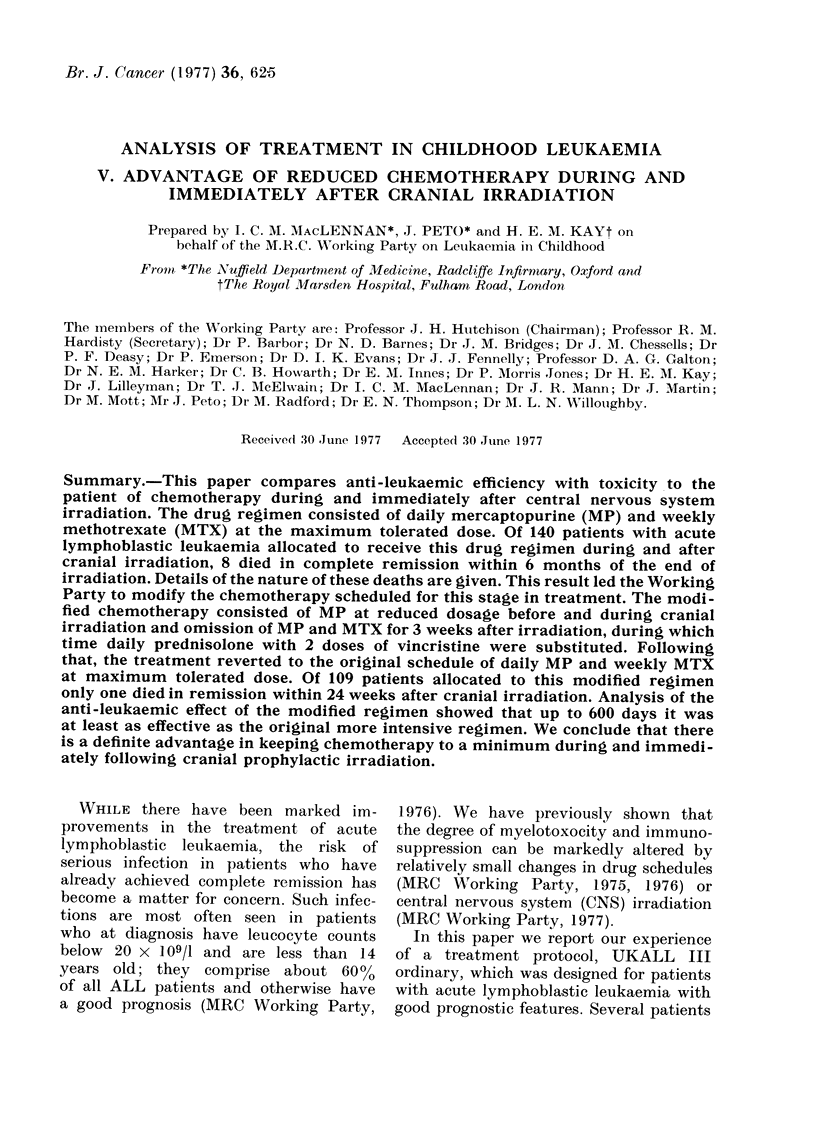
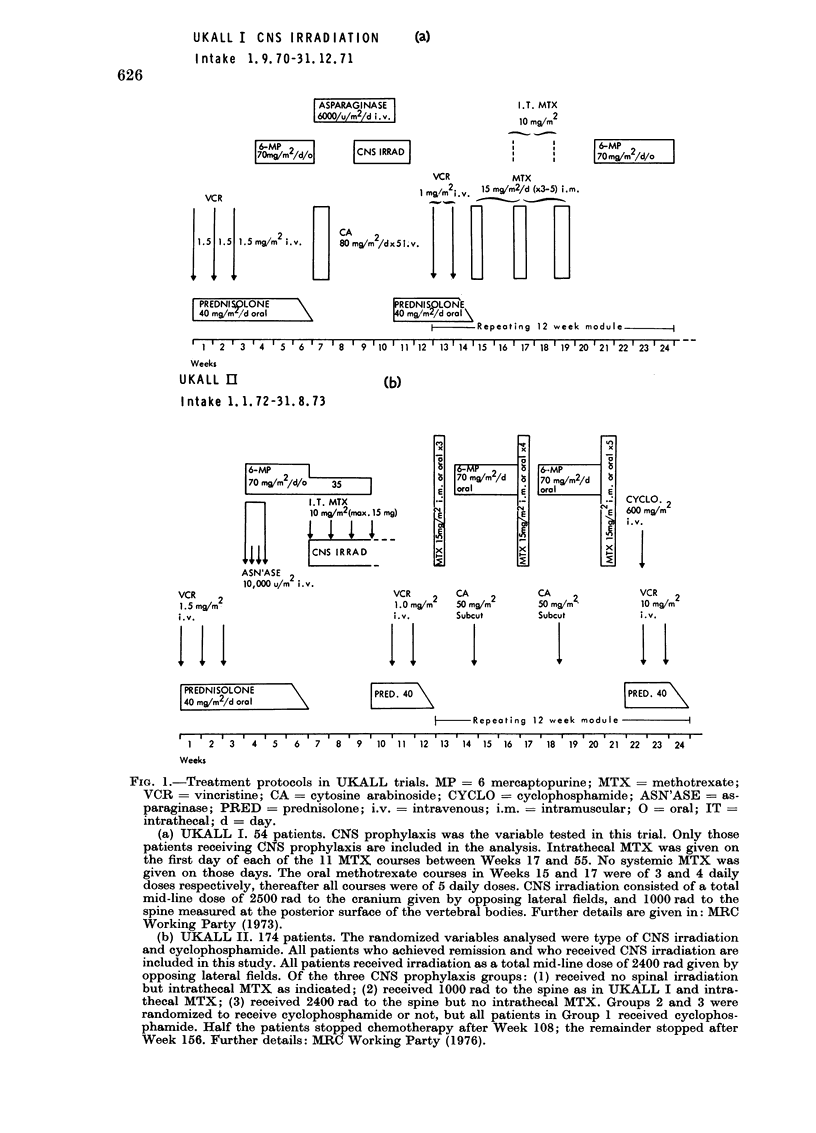
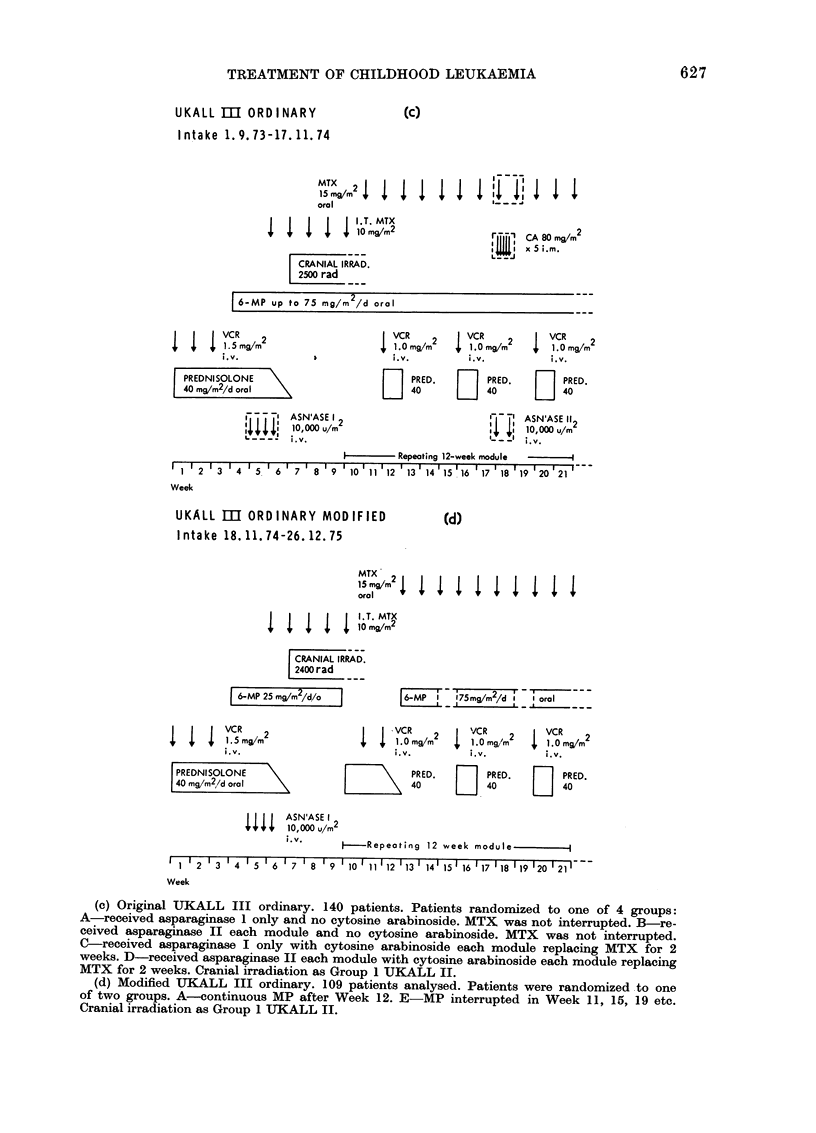
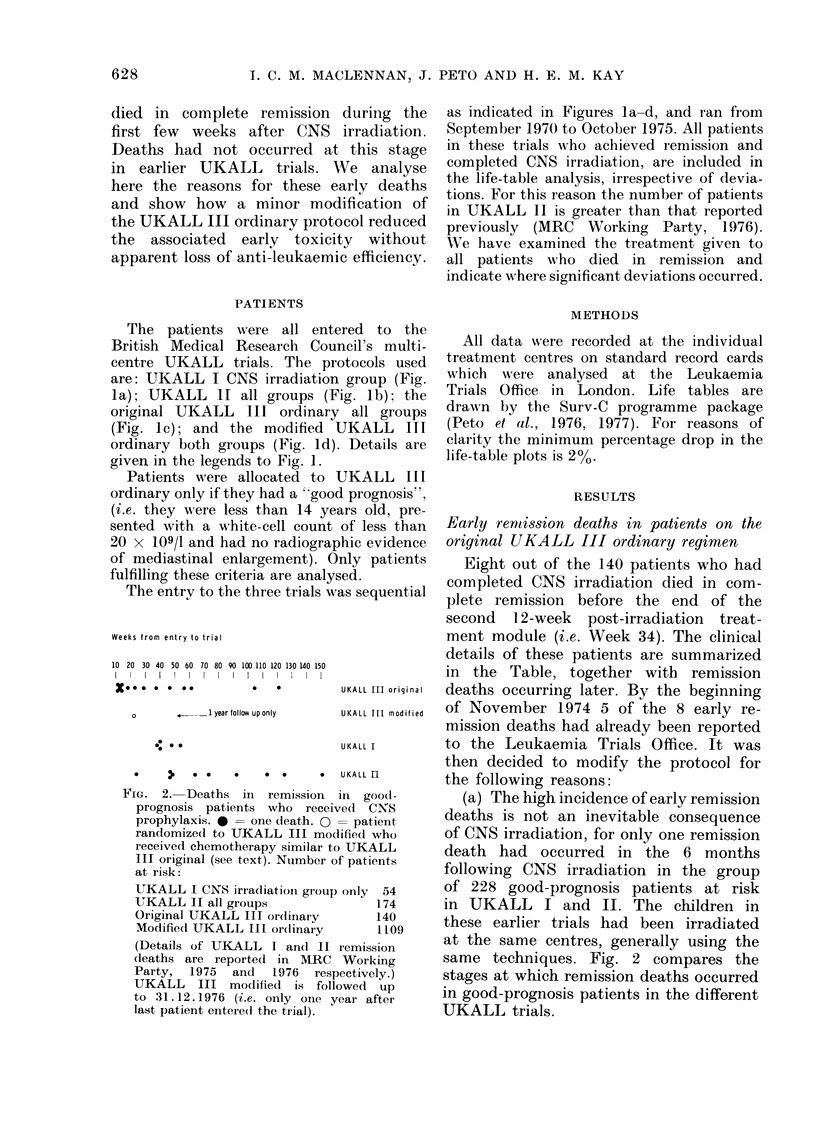
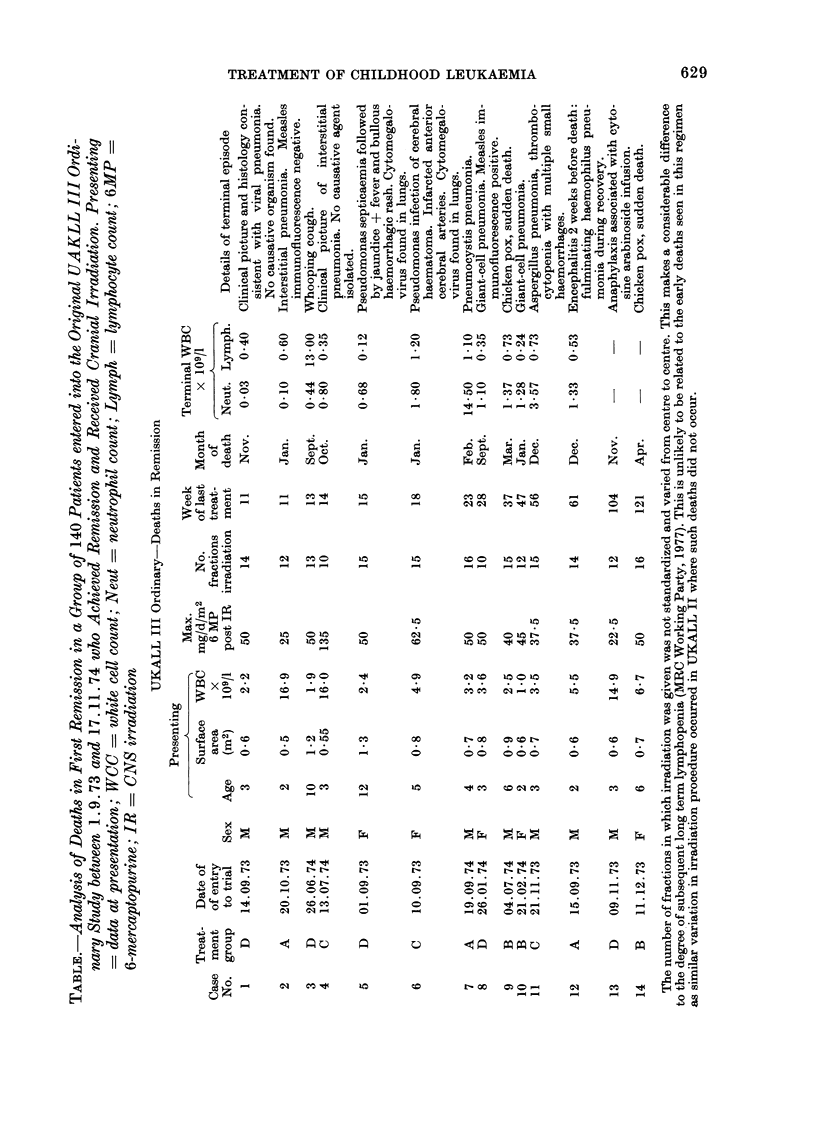
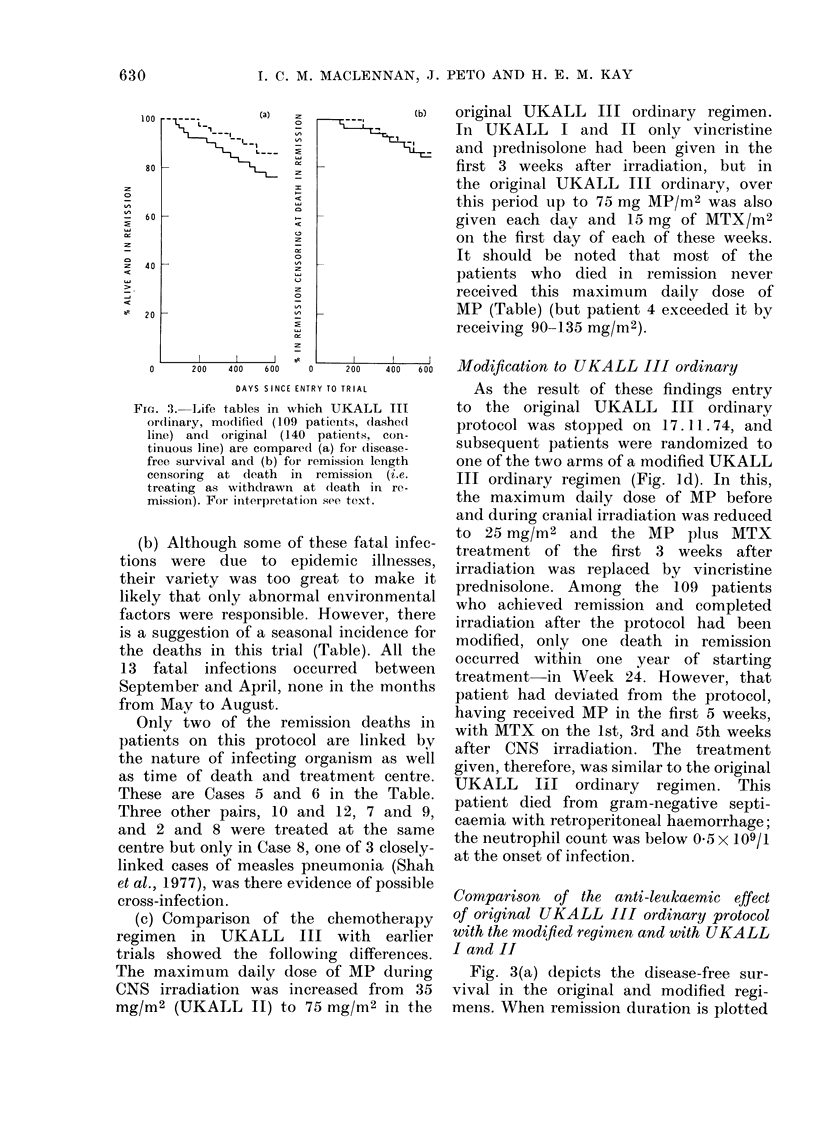
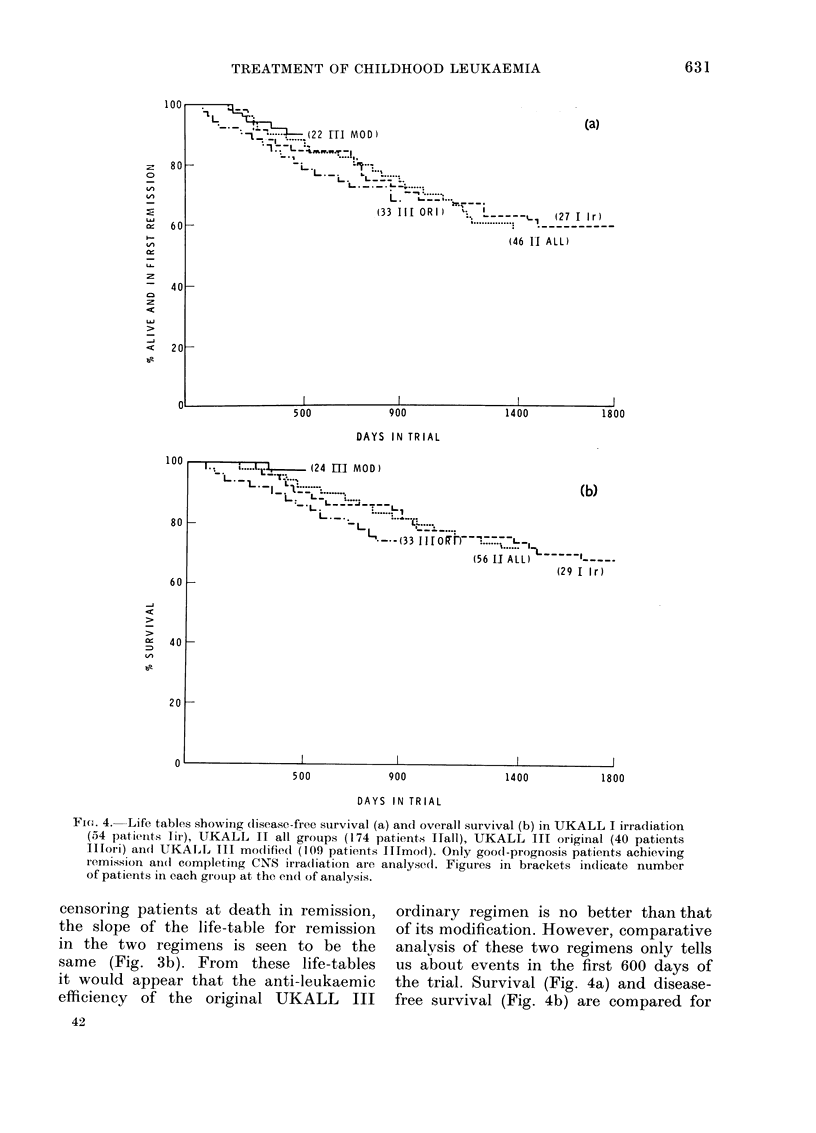
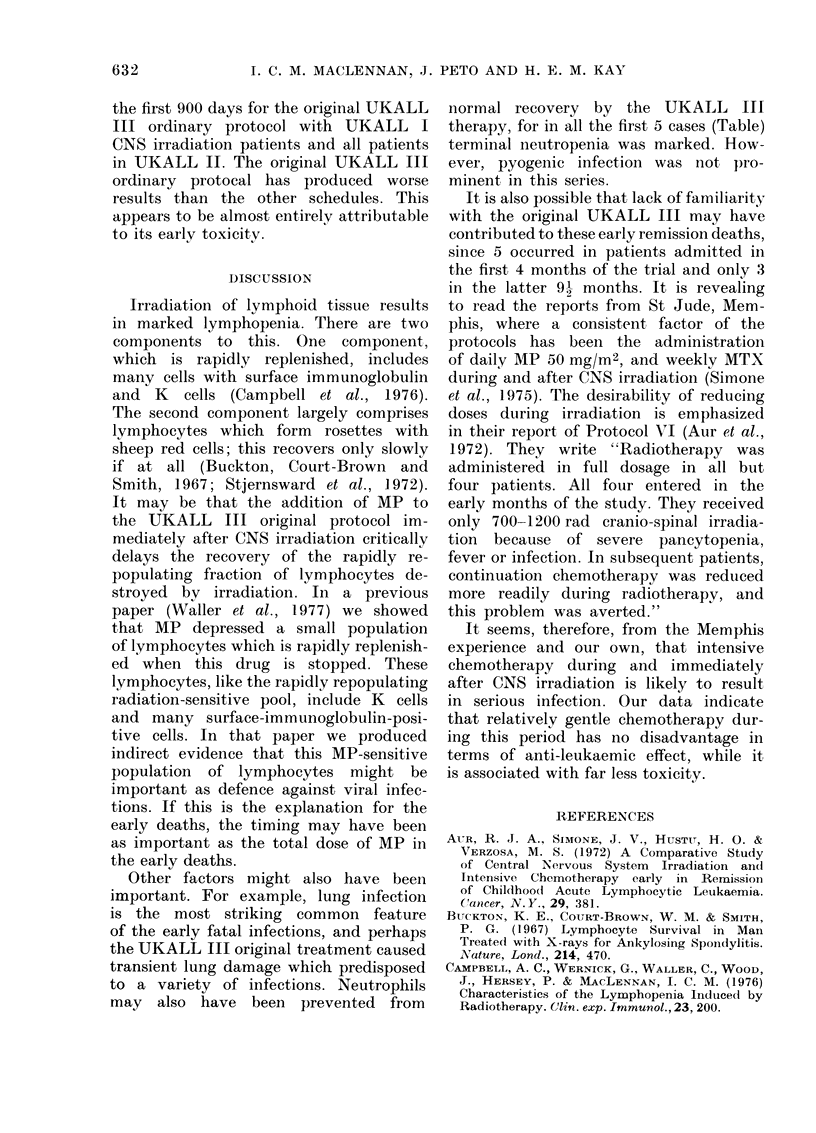
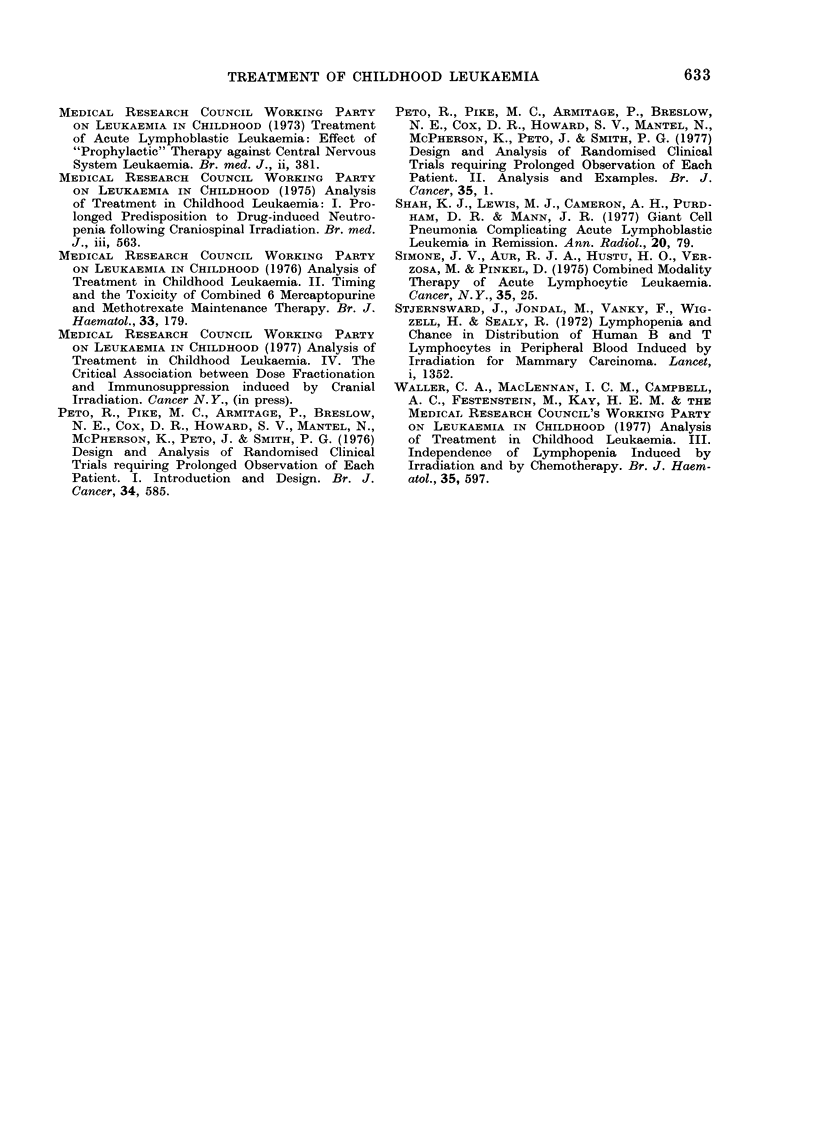
Selected References
These references are in PubMed. This may not be the complete list of references from this article.
- Buckton K. E., Brown W. M., Smith P. G. Lymphocyte survival in men treated with x-rays for ankylosing spondylitis. Nature. 1967 Apr 29;214(5087):470–473. doi: 10.1038/214470a0. [DOI] [PubMed] [Google Scholar]
- Peto R., Pike M. C., Armitage P., Breslow N. E., Cox D. R., Howard S. V., Mantel N., McPherson K., Peto J., Smith P. G. Design and analysis of randomized clinical trials requiring prolonged observation of each patient. I. Introduction and design. Br J Cancer. 1976 Dec;34(6):585–612. doi: 10.1038/bjc.1976.220. [DOI] [PMC free article] [PubMed] [Google Scholar]
- Peto R., Pike M. C., Armitage P., Breslow N. E., Cox D. R., Howard S. V., Mantel N., McPherson K., Peto J., Smith P. G. Design and analysis of randomized clinical trials requiring prolonged observation of each patient. II. analysis and examples. Br J Cancer. 1977 Jan;35(1):1–39. doi: 10.1038/bjc.1977.1. [DOI] [PMC free article] [PubMed] [Google Scholar]
- Shah K. J., Lewis M. J., Cameron A. H., Purdham D. R., Mann J. R. Giant cell pneumonia complicating acute lymphoblastic leukemia in remission. Ann Radiol (Paris) 1977 Jan-Feb;20(1):79–86. [PubMed] [Google Scholar]
- Stjernswärd J., Jondal M., Vánky F., Wigzell H., Sealy R. Lymphopenia and change in distribution of human B and T lymphocytes in peripheral blood induced by irradiation for mammary carcinoma. Lancet. 1972 Jun 24;1(7765):1352–1356. doi: 10.1016/s0140-6736(72)91091-4. [DOI] [PubMed] [Google Scholar]
- Waller C. A., MacLennan I. C., Campbell A. C., Festenstein M., Kay H. E. Analysis of treatment in childhood leukaemia. III. Independence of lymphopenia induced by irradiation and by chemotherapy. Br J Haematol. 1977 Apr;35(4):597–612. doi: 10.1111/j.1365-2141.1977.tb00624.x. [DOI] [PubMed] [Google Scholar]


